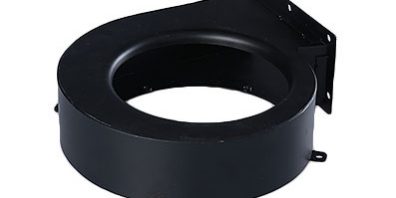In the powder spraying process, the dust concentration can be controlled by the following methods:
**I. Install a ventilation system**
1. Select appropriate ventilation equipment: According to the size of the spraying area and the amount of dust generated, select appropriate ventilation equipment, such as explosion-proof fans. Ensure that the air volume and air pressure of the ventilation equipment can meet the requirements for timely dust removal. For example, for larger spraying workshops, high-power centrifugal fans can be selected to ensure sufficient ventilation effect.
2. Reasonably design ventilation ducts: The layout of ventilation ducts should be reasonable, minimizing bends and resistance to ensure smooth air circulation. The diameter of ventilation ducts should be calculated according to the air volume and wind speed of ventilation equipment to ensure sufficient ventilation area. For example, circular ventilation ducts can be used, which have relatively small resistance and are conducive to air circulation.
3. Install exhaust hoods: Install exhaust hoods near the spray gun to directly draw the dust generated during the spraying process into the ventilation system. The shape and size of the exhaust hood should be designed according to the type of spray gun and the characteristics of spraying operations to ensure effective dust collection. For example, for hand-held spray guns, small local exhaust hoods can be installed; for automated spraying equipment, large overall exhaust hoods can be installed.
**II. Use dust collection devices**
1. Bag filter: The bag filter is a common dust collection device. It filters the dust in the air through the filter bag to achieve the purpose of purifying the air. The bag filter has a high filtration efficiency and can effectively control the dust concentration. For example, in a spraying workshop, a bag filter can be installed to filter the dusty air discharged by the ventilation system and then discharge the clean air outdoors.
2. Cyclone dust collector: The cyclone dust collector uses centrifugal force to separate the dust in the air. It has the advantages of simple structure and low cost. The cyclone dust collector is suitable for treating larger particles of dust, but has a poor filtering effect on fine particles of dust. For example, a cyclone dust collector can be installed at the inlet of the ventilation system to separate the larger particles of dust first, and then further process it through other dust collection devices.
3. Wet dust collector: The wet dust collector wets the dust in the air by spraying water or mist and then collects the wetted dust. The wet dust collector is suitable for treating flammable and explosive dust and has the advantages of safety and reliability. For example, in a spraying workshop containing combustible powder, a wet dust collector can be used to prevent dust explosions.
**III. Strengthen workshop management**
1. Keep the workshop clean: Regularly clean the spraying workshop and remove the dust on the ground, equipment and workbenches. Tools such as vacuum cleaners and brooms can be used for cleaning, or high-pressure water guns can be used for flushing. For example, clean the workshop comprehensively before leaving work every day to ensure that there is no accumulated dust in the workshop.
2. Control spraying operation time: Reasonably arrange the spraying operation time to avoid continuous long-term spraying operations to reduce the amount of dust generated. For example, segmented operations can be adopted, and spraying operations can be paused at intervals to allow the ventilation system to have enough time to discharge dust.
3. Strengthen employee training: Train spraying operators to improve their safety awareness and operation skills and let them understand the hazards of dust and control methods. For example, regularly organize employees to participate in safety training courses to learn how to correctly use ventilation equipment and dust collection devices and how to keep the workshop clean.






